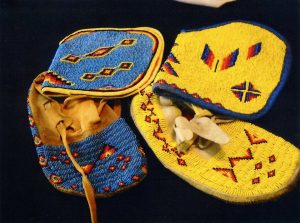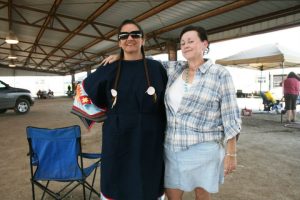200 Stories for Missouri’s Bicentennial, March 2021
200 Stories, March 2021
#ShowMeFolk #200Stories #Missouri2021 #Missouri200
In Missouri’s bicentennial year, Missouri Folk Arts will share 200 stories over the course of 52 weeks in 2021 about folk and traditional arts in the Show Me State. We kicked off March with Story 33 and wound up with Story 50 (1/4 down and 3/4 to go).
Story 33 of 200
Howe Teague, TAAP master artist: 1985
The late Howe Teague (Salem) is another master artist who participated in the very first year of the Traditional Arts Apprenticeship Program, with his apprentice Clark Miller. Howe Teague cemented his old-time music legacy with his fine fiddling–and by hosting a live music radio show, “Howe Teague and the Gang,” on KSMO with Mitch Jayne running the sound board.
The late Mitch Jayne, by the way, devoted most of a chapter in _Home Grown Stories and Home Fried Lies_ to Mr. Teague as storyteller. Pick up a copy to read more. And, maybe listen to Teague’s MSOTFA album “Ozark Memories” while you do: https://missourifiddling.bandcamp.com/…/howe-teague…
Linked here is Howe Teague playing Grey Eagle, as recorded by Linda Higginbotham in 1984 outside the Mountain Folks Music Festival in Branson (Higginbotham on banjo and Brad Leftwich on banjo uke. Photo of Teague outside his Salem home by Mark Wilson.)
http://https://youtu.be/ZE3rgnQjqyw
Story 34 of 200
Claude “Fiddler” Williams, TAAP master artist: 1985, 1987
By the age of ten, Claude Williams (1908-2004) was already playing music for tips outside barber shops and hotels, after picking up guitar, banjo, mandolin, and cello by ear from his brother-in-law’s string band in Oklahoma.
Ultimately a KC Jazz legend, Mr. Williams spent much of the 1920s touring with various ensembles. As a jazz guitarist, he played in the bands of Nat “King” Cole and Count Basie. Finally, in 1937, he settled on the instrument that personified him, earning his nickname and well-deserved recognition. While working steadily as a band leader and backing musician, he was relatively unknown for years. In later life, in quick succession, the honors began to roll in: Oklahoma Jazz Hall of Fame, appearances at Monterey and Nice jazz festivals, performances at the Smithsonian Folklife Festival, Masters of the Folk Violin national tour, and a prestigious National Heritage Fellowship (1998) from the National Endowment for the Arts.
Luckily, Fiddler Williams and his artistry have been well documented. Read more about him on the Masters of Traditional Arts’ website: http://mastersoftraditionalarts.org/artists/356.
And, catch this 2001 solo at the Philly Jazz Fest by Mr. Williams at age 92 below.
http://https://youtu.be/rTwr4tka4TU
Story 35 of 200
Eimear Arkins, TAAP master artist: 2018
Some have known Eimear Arkins for her pursuits at Mizzou’s School of Journalism and School of Law, or her work in arts education and outreach.
We at Missouri Folk Arts, really anyone affiliated with St. Louis Irish Arts, St. Louis TIONÓL, and far, far beyond, know Ms. Arkins as an incredibly talented Irish musician and singer. She is an ambassador promoting her Irish culture worldwide and inspiring children to engage in their traditions as well.
While Arkins is recognized widely for Irish fiddling, in 2018, she taught apprentice Rowan Elliott a singing tradition, Sean nós, in the Irish language. Teaching is dear to Arkins, who has spearheaded outreach programs, in-school and extracurricular music programs, and inspired comprehensive music curriculum for several schools.
To learn more about this young and accomplished musician, followers can follow her on Facebook at Eimear Arkins Music, as well as on Instagram.
In 2018, Missouri Folk Arts recorded a few minutes from a performance by Arkins and Rowan Elliott (with KT Elliott on harp) at the Museum of Art and Archaeology, University of Missouri.
http://https://youtu.be/MXUoS-C_woY
Story 36 of 200
Bob Walsh, TAAP master artist: 1985, 1987, 1988
Bob Walsh (1929-1990) of Cape Fair, Mo., was a highly-respected Ozark regional fiddler, who was active in several regional fiddle organizations, as a musician, judge, and event coordinator. In 1988, C. Ray Brassieur nominated Mr. Walsh for a National Heritage Fellowship and wrote: “His father began tutoring him on an old fiddle that had been brought from Ireland by his grandfather. Mr. Walsh’s talents developed quickly and as a boy he played for country square dances and won many fiddle contests in the Eminence area. After 1952, fiddling took a back seat to Mr. Walsh’s pursuit of a livelihood and family life, but in 1972, interested followers demanded that he take up the fiddle again.” Among many accomplishments, Mr. Walsh was a key advocate to have the fiddle recognized as one of Missouri’s state symbols.
Charlie Walden digitized Walsh’s Old Time Ozark Fiddlin’ album on cassette in 2015, and it’s available for all to listen to all sixteen tunes with Walsh, Daryl Tunick, Jarold McIntosh, Joe Brayfield, Louis Holt, and Greg Bailey backing the fiddler. https://www.youtube.com/watch?v=qIynRnuWi80
37 of 200
Raymond Thebeau, TAAP master artist: 1994, 1995
Ray Thebeau (1931-2014) was devoted to the tradition of square dancing and calling in the Missouri French region where he was born and raised. Along with his first wife Theresa Merseal Thebeau (who predeceased him in 2005) and his second wife Emma Boyer Thebeau, Ray Thebeau actively promoted the tradition. He and the Potosi Dancers enjoyed regular dances at the St. Joachim Catholic Church in Old Mines, among many other locations.
On the Missouri Traditional Fiddle and Dance Network website, it is noted that Mr. Thebeau “had perfected the art of teaching dances without bossing anyone around, and was a kind and gentlemanly presence behind the microphone, in a square, or sitting one out, chatting in the chairs around the floor.” The Thebeaus and the Potosi Dancers also frequented the Bethel Youth Fiddle Camp. In the 1997 video linked here, they dance (and he calls from the square) while Bob Holt, Alvie Dooms, and others play “Eighth of January.”
http://https://youtu.be/iOypPmbEUCk
38 of 200
Wendi Wald, TAAP master artist: 2012
Wendi Wald grew up on Standing Rock Reservation and relocated to Missouri as an adult. At home, she and her family immersed themselves in their community traditions, and she learned to make regalia for dances, including to sew and bead moccasins. In central Missouri, she participates in the pow-wow community, including the For the People Pow Wow cofounded by her friend, the late Dona McKinney. They worked together in apprenticeships, exchanging knowledge and making dance regalia for family and community members.

Moccasins made and beaded by Wendi Wald. Photos by Deb Bailey

Wendi Wald (left) with Dona McKinney at 4th annual For the People Pow-wow in Columbia over 2011 Memorial Day weekend.
39 of 200
Carmen Sofia Dence, TAAP master artist: 1994, 1996, 1997, 2000, 2019
Carmen Dence learned to dance as a child from family members and peers, specializing in traditional Colombian dancing of Barranquilla that melds Indigenous, Spanish, and African influences. Ms. Dence has lived in St. Louis, Missouri for over four decades, where she spent thirty-seven years as an Associate Professor of Radiology at Washington University.
Throughout that time, she tended her passion for dance – which she sustains to this day, especially via Grupo Atlántico St. Louis, the dance troupe she founded in 1995. The troupe performs often in the metro St. Louis area and beyond, and dedicates portions of its fees to scholarships for Hispanic women studying Science, Technology, Engineering, and Mathematics in college. Grupo Atlántico is also listed in the Missouri Arts Council‘s directory of Touring Performers: https://www.missouriartscouncil.org/touring-performers/
Dence shared her story in this 2019 Gazelle Magazine article:
http://https://gazellemagazine.com/melting-pot-carmen-dence/?fbclid=IwAR1eWMktwEqAY4H4F_lUvZ_euwFWZ05t2KRtPQRwW644a9ZbDezTmUyt9BA
40 of 200
200 Stories, Family Week!
Over the decades, a few families have participated in the Traditional Arts Apprenticeship Program as individual artists, so stay tuned for the occasional family week throughout the year. This week, we’ll be featuring the Gannon family of St. Louis, the wonderful sustainers of Irish music, dance, language, and foodways. Through their devotion to St. Louis Irish Arts, the Gannons have not only passed traditional arts down within their own family, they have inspired and engaged others in the city to do the same.
To get a taste of how embedded the Irish arts are in the family, set aside an hour to check out three generations of Gannons performing at their 2006 concert at the American Folklife Center in the The Library of Congress.
If you can’t find a whole hour, we highly recommend fast-forwarding to 37:45 to watch one of the best waltzes of all time. And, stay tuned for stories about a few members of the family this week of St. Patrick’s Day.
http://https://www.loc.gov/item/webcast-4361
41 of 200
Niall Gannon, TAAP artist: 1986 (apprentice); 1991 and 1994 (master artist)
Niall Gannon, the middle son of PJ and Helen, picked up fiddle as a child, at first learning the Suzuki method. As his parents championed Irish traditional arts in St. Louis, Niall shed his more formal training in favor of the Irish tunes that connect his family to their roots.
Niall is the first Gannon to participate in the Traditional Arts Apprenticeship Program, when he apprenticed to renowned Irish fiddler James Kelly in 1986. In the ensuing years, Niall often competed in the All-Ireland Fleadh and directed the St. Louis Irish Grupai Cheoil, who won the 2004 championship senior title. Niall has given back to the Traditional Arts Apprenticeship Program by teaching Gregory Krone in 1991 and Kevin Buckley in 1994, both of whom continue to actively play Irish fiddle in the region.
Since that time, Niall has continued playing in The Banks of Ceili, teaching at St. Louis Irish Arts, and sustaining the tradition in his own family. At the 2006 American Folklife Center concert linked in Story 40 of 200, Niall shared two reels (starts at 16:12): Once in a Blue Moose and Over the Moor to Maggie.
42 of 200
Helen Gannon, TAAP artist: 1988 (apprentice); 1990, 1992, 2006
Like her middle son, @Helen Gannon first came to the Traditional Arts Apprenticeship Program as an apprentice. As a child, Helen was incredibly fond of her Irish dance lessons. As the family worked to grow St. Louis Irish Arts, they recognized the need to sustain the marriage between traditional music and dance. As the family matriarch now, Helen often recalls how vital traditional arts were in keeping her family in the U.S., rather than return home permanently to Ireland, for which she was very homesick.
Helen turned her apprenticeship with master Irish dancer Maureen Hall into passing her certification exams to officially teach the tradition in the U.S. and to make her students eligible to compete in competitions here and in Ireland. Her former students are now dance Irish dance instructors. While her knees preclude much dancing these days, Helen continues to teach tin whistle, to encourage fluency in the Irish language, and even to teach traditional foodways recently as fundraisers for SLIA. Learn how to make Irish brown bread from Helen (and hear traditional music while it bakes) here:
In an excerpt from her narrative interview at the 2019 @St. Louis Storytelling Festival, Helen recalls both being an apprentice and a master artist.
http://https://www.youtube.com/watch?v=OhEN3RVX5HA
43 of 200
Patrick “PJ” Gannon, TAAP master artist: 1988, 1989, 1990, 1993, 1994, and 1997
Now nearing 90, PJ Gannon is the Gannon family patriarch. Though he is since retired, Dr. PJ Gannon (of Galway) originally emigrated with his family to St. Louis in 1967 to pursue a one-year research project in his specialty, psychiatry. Thankfully, that position turned into a nearly 50-year career in the city, where he, too, found time for the traditional music so dear to him in his childhood.
Dr. G has taught ten apprentices in TAAP during six apprenticeships over the course of ten years. He not only taught apprentices (and SLIA students) the traditions of tin whistle, harmonica, and Sean-nòs, Dr. G himself took two senior championships on harmonica at Fleadh Cheoil na hÉireann. In public performances over the years, he has been known, too, for sharing jokes and tales. In 2007, Dr. G and Eileen Gannon, daughter and harpist, released an album of harmonica and harp duets.
PJ Gannon is one of a rare group of TAAP artists, those Master Artists; Master Teachers, who have taught five or more apprenticeships. Read a bit more about him at the link and listen to the audio clip from 2006, where he discusses how he carries on a legacy, with humor, passed down from his parents.
https://mofolkarts.missouri.edu/exhibits/patrick-gannon/
44 of 200
200 Stories
Eileen Gannon, TAAP master artist: 1996 and 2021
**Missouri Folk Arts is excited to announce that Ms. Gannon is one of ten 2021 Traditional Arts Apprenticeship Program master artists. She and her apprentice Elizabeth Rose Kleissler (St. Louis) have been meeting regularly for months.**
Last in the Gannon Family profiles, and in birth order, is Eileen Gannon–a highly-accomplished, award-winning Irish harpist–and the only Gannon to pursue music as a full-time career. As such, we know that 2020 was a particularly difficult year, for all performing artists, and especially perhaps those Irish artists who March 2020 was postponed and cancelled.
We are heartened, though, not only by the apprenticeship (and an upcoming virtual concert to share with Missouri Folk Arts followers) but by recent and upcoming performances. Just days ago, Ms. Gannon joined St. Louis Irish Arts instructors Eimear Arkin and Robert Ryan for a live, and ArtSafe, concert at Mineral Area College’s Fine Arts Theater. Gannon and Arkins also recently performed on stage at The Focal Point to broadcast virtually its annual St. Patrick’s Day concert. And, this Saturday, March 20th, Gannon and @Robert Ryan Fiddle will perform an open-air concert live at The Royale in support of their new CD “Down the Rocky Road” available for listen and purchase at https://robertryanfiddle.bandcamp.com/releases
45 of 200
Mid-Missouri Traditional Dancers is a grassroots non-profit that coordinates regular dances, teaches dance classes for public school children, and host its annual Spring Breakdown–in a typical year.
The pandemic obviously put quite the crimp in dances. Happily, the MMTD team has figured out to create a virtual 2021 Spring “Total Breakdown,” which kicks off right (3/19) with a concert, includes waltz and calling workshops tomorrow. The virtual Contra Dance closes the weekend tomorrow via the Mid-Missouri Traditional Dancers’ Facebook page. The weekend is funded in part with a Missouri Arts Council Folk Arts grant and the City of Columbia- Office of Cultural Affairs.
Check out the opening concert here: https://fb.watch/4k-5GDm25N/
46 of 200
John Kaleiowaipua Kumia, TAAP master artist: 1996, 1998, 1999
John Kaleiowaipua Kumia is a Hawaiian traditional artist who relocated to mid-Missouri in the mid-nineties. He was born in Honolulu in 1956, and his family spoke Hawaiian as their first language in the home. The women in Mr. Kumia’s family (his beloved mother, grandmother, and great-grandmother) earned income for the household by making leis. Crafting leis is a tradition that he, too, learned and passed on to others, including in 1998 and 1999 to his TAAP apprentices (members of a small community of Hawaiians who relocated to Missouri).
Kumia also long-trained, then taught, traditional hula dancing. At home, he and his family (of Hawaiian, Chinese, and Filipino descent) were active in their community’s music and dance traditions. Kumia earnestly began to study hula as a teen with one of Hawaii’s revered Ma’iki Aiu Lake, who founded Halau O Ma’iki. In Missouri, he founded Halau Hula O Missouri and dove deeper into an intensive hula apprenticeship that eventually evolved into a performance group that performed locally and toured via Missouri Performing Traditions through the late nineties.
Read more about John Kumia and his Hawaiian traditions in this 1999 essay by previous MFAP director Dana Everts-Boehm: https://mofolkarts.missouri.edu/…/2017/05/hawaiian.pdf
47 of 200
J.R. Reed, TAAP master artist: 1994, 1996, 1997
J.R. Reed (d. 2011) left behind a legacy in the St. Louis blues scene, a member of a certain era of blues greats that includes Tommy Bankhead, Doc Terry, Piano Slim, and Oliver Sain. Mr. Reed worked as a side man, and gigged often with his “Real Blues Band,” at locales like BB’s Jazz, Blues, & Soups; Just the Two of Us Lounge; and Cicero’s, among others. An active member of the St. Louis Blues Society, J.R. Reed was known as a “triple threat” on blues guitar, harp, and vocals.
In 1984, Reed released his album “Reflection of the Blues,” and he is a featured artist on the 1998 multi-artist compilation album “St. Louis Blues Today,” which included his tunes “Late in the Evening,” “Love You Most Every Day,” “Everything is Fine,” and “Look What I Got for You.” Online recordings of Reed’s music seem few and far between, but samples of these tunes are available on Amazon, where digital tracks from the compilation CD are available for purchase: https://www.amazon.com/…/B017A5MKR8/ref=dm_ws_sp_ps_dp
Photo of J.R. Reed from the Rat Pack St. Louis website. http://www.ratpackstlouis.com/Reed1.jpg
48 of 200
Ozark Vitality, project partner since 2018
Ozark Vitality is a non-profit organization based in Doniphan, Mo. serving rural communities in the eastern Ozarks of Missouri and Arkansas. We at Missouri Folk Arts had the honor to meet OV staff and work with them in the spring of 2018. Since that time, we’ve been continually wowed by their mission to “create a better place to live work, and play” in their home region. We’ve noticed, too, that no matter the project, they are grounded unabashedly in a sense of place and the “power of art, culture, and creativity to ignite positive change and spur economic growth.”
All of their work is impressive, including disaster recover following the epic 2017 floods. We also are partial to their fine filmmaking, shining a light on the physical beauty and bountiful traditions of the region. Follow them on Facebook, and view their seven (so far!) short films on YouTube, like the most recent one that tells the unique story of East Perry County and its deep German roots.
We look forward to learning more from their stories and deepening our partnership in the upcoming months and years.
http://https://youtu.be/IYIhcOk-LKI
